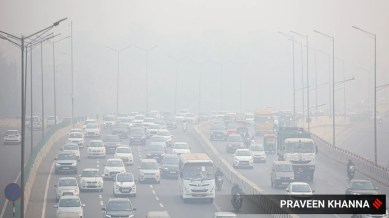📣 For more lifestyle news, click here to join our WhatsApp Channel and also follow us on Instagram
Can artificial rain provide relief from smog?
Improved air quality alleviates lung strain, reducing inflammation and the risk of long-term complications.

Artificial rain, or cloud seeding, can significantly mitigate smog due to alarming air pollution levels in cities like Delhi NCR. Smog, a combination of pollutants and particulate matter, worsens air quality and exacerbates respiratory issues, especially in vulnerable populations such as children, the elderly, and those with pre-existing lung conditions, said Dr Tapaswi Krishna, lung transplant, interventional pulmonologist and sleep medicine, Gleneagles Hospitals, Lakdi Ka Pul, Hyderabad.
Dr Manjusha Agarwal, senior consultant, internal medicine, Gleneagles Hospital Parel Mumbai, explained that artificial rainfall is induced by adding chemicals like silver iodide or salt to the clouds. “These substances, when sprinkled on the clouds, can help the water droplets in the clouds to combine, making them grow heavy enough to fall as rain. This technique is often used in areas actively facing various calamities like drought. It also helps improve air quality in the polluted regions,” elaborated Dr Agarwal.
Not just pollutants, artificial rain also helps reduce the visibility of smog by effectively washing away dust and smoke. “When it rains, these harmful particles tend to settle on the ground, resulting in cleaner air and easier breathing. However, this can be just a temporary relief.
Additionally, it helps restore some moisture to dry atmospheric conditions, which are often conducive to smog formation, noted Dr Shobha Gupta, medical director of Mother’s Lap IVF Centre New Delhi and Vrindavan.
“This process significantly reduces airborne contaminants, improving air quality and decreasing the concentration of harmful pollutants like PM2.5 and PM10. Cleaner air reduces the risk of respiratory problems such as asthma, bronchitis, and other chronic lung diseases,” said Dr Krishna.
Moreover, improved air quality alleviates lung strain, reducing inflammation and the risk of long-term complications. “Cleaner air helps pregnant women breathe easier, lowers stress on their respiratory systems, and promotes a healthier environment for their unborn child.
“While artificial rain isn’t a standalone solution, it can be an effective short-term measure in tackling severe smog episodes and protecting public health,” said Dr Krishna.
Additional measures
Dr Agarwal stressed that people should try using public transport or prefer walking short distances instead of using their vehicles. “This can reduce air pollution. Avoid burning any waste like crops, plastic, paper, leaves, or garbage as it releases harmful pollutants that can contribute to smog,” said Dr Agarwal.
DISCLAIMER: This article is based on information from the public domain and/or the experts we spoke to. Always consult your health practitioner before starting any routine.
📣 For more lifestyle news, click here to join our WhatsApp Channel and also follow us on Instagram